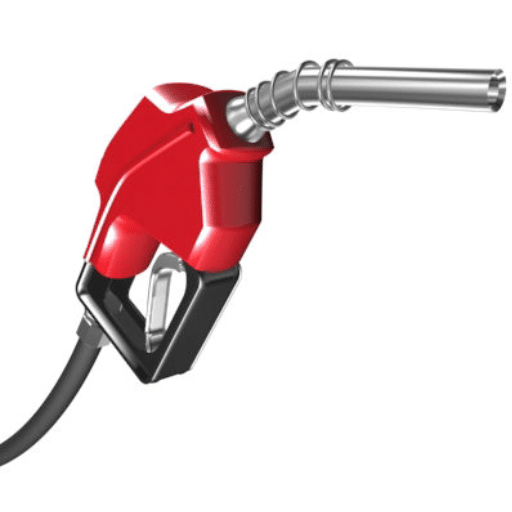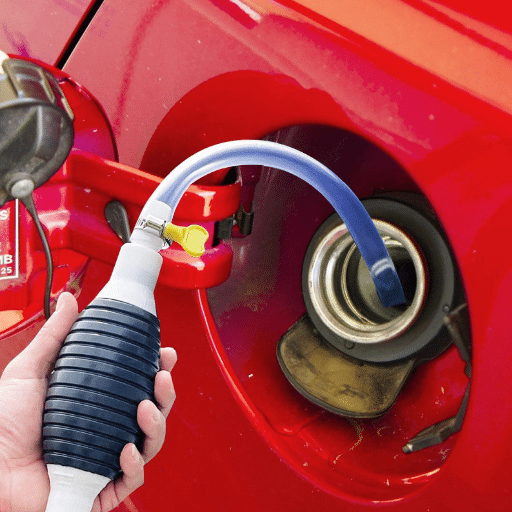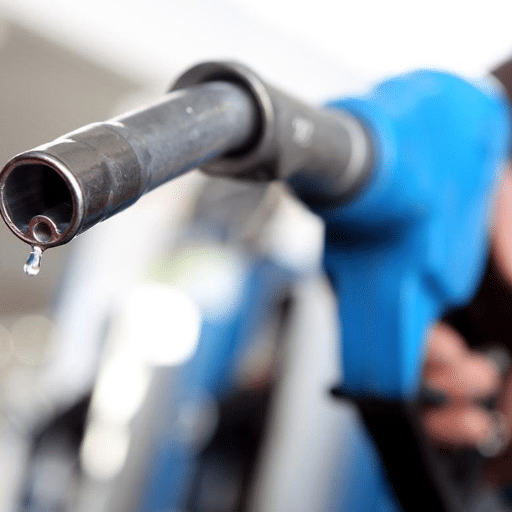Fueling is within a breathtaking transformation, third by technology and fourth by changes in consumer expectations. No longer mere facilities for refuelling, smart gas stations are becoming centres of convenience, innovation, and efficiency. From automated and contactless payment integration with IoT devices to green solutions, the modern gas station is being shaped by the needs of motorists and the resurgence of green initiatives. This blog explores the technologies and solutions that are making fuel dispensing a futuristic affair, enhancing the customer experience, and transforming what it means to be stopped by a pump. Prepare to uncover the trends and strategies changing the face of this industry.
Understanding the Smart Gas Station Concept

The innovative gas station concept utilizes advanced technologies to provide convenience, high efficiency, and sustainability at fueling sites. From automatic payment systems to IoT kegsters for fuel level and equipment state monitoring, from EV chargers to hydrogen refueling-all these make a smart gas station. Through data analytics and real-time tracking, these smart gas stations are champions of customer experience, operational efficiency, and environmental sustainability.
Defining Smart Gas Stations
A smart gas station utilizes modern technology and innovative solutions to deliver enhanced services while maintaining sustainable operations. For example, and in perfect agreement with recent trends, using IoT technologies enables real-time fuel tracking for smooth inventory management and to avoid stressful supply disruptions. Automated payment technologies represent another significant leap in transaction efficiency, with contactless payments allowing customers to spend less time waiting.
30%
30%
25%
70%
On the other hand, to keep things green, some of the smart gas stations now sport solar panels to generate renewable energy on-site and provide for alternative fuels, such as EV chargers and hydrogen refueling stations, to help cater to the growing demand for cleaner transport options. Operators utilize data-driven insights to forecast customer flows and optimize energy usage, thereby reducing costs while increasing efforts to lower their carbon footprint.
Recent studies indicate that the global smart gas station market is expected to experience significant growth due to the increasing adoption of digital solutions in the fuel and energy sectors. These improvements thus enhance operational efficiency while serving global sustainability goals and the answers to greener energy solutions.
Comparison with Traditional Gas Stations
The primary differentiator between smart gas stations and conventional fuel stations is the technology they utilize, their operational efficiency, and the environmental impact they have. Traditional gas stations often operate manually when it comes to fuel transactions, inventory management, and customer service, resulting in higher operational costs and less-efficient resource allocation. In contrast, smart gas stations are equipped with state-of-the-art technologies, including the Internet of Things (IoT), artificial intelligence (AI), and predictive analytics, to streamline processes, enhance customer experience, and improve operational efficiency.
| Aspect | Traditional Gas Stations | Smart Gas Stations |
|---|---|---|
| Payment Systems | Manual, cash/card-based | Contactless, mobile apps, automated |
| Inventory Management | Manual monitoring is prone to errors | IoT sensors, real-time tracking |
| Energy Efficiency | Conventional systems | 30% reduction in power consumption |
| Customer Services | Basic fuel and convenience | EV charging, personalized loyalty programs |
| Environmental Impact | Traditional energy sources | Solar panels, renewable energy integration |
| Data Analytics | Limited insights | AI-driven predictions, customer behavior analysis |
For instance, whereas conventional gas stations often face inventory challenges related to fuel, smart stations utilize IoT-enabled sensors to monitor fuel levels in real-time, thereby reducing stock-outs and overstocking. Second, research shows that smart gas stations equipped with energy-efficient systems reduce power consumption by as much as 30%, thereby saving costs and promoting sustainability.
Given standard payment options and services offered by conventional stations, smart gas stations are integrating mobile app payments, EV charging stations, and customized loyalty programs for their customers. This transition aligns with the modern, tech-savvy consumer population while promoting environmental awareness. The emergence of smart gas stations marks a significant modernization of the fuel and energy industries, amid growing global advocacy for sustainable energy solutions.
Benefits of Smart Gas Technology
Numerous advantages of innovative gas technology serve both consumers and the environment. One predominant advantage is enhanced convenience and efficiency. Integration with mobile applications, for instance, enables the driver to locate the nearest gas station, check fuel prices in real-time, and make contactless payments, thereby saving time and reducing hassle. Some gas stations equipped with innovative technology also utilize automated processes to minimize wait times during fuel dispensing.
Key Benefits of Smart Gas Technology
- Enhanced Convenience: Mobile app integration for location, pricing, and contactless payments
- Environmental Sustainability: EV charging infrastructure and renewable energy integration
- Cost Reduction: 30% reduction in operational costs through IoT solutions
- Safety Improvements: Advanced sensors for leak detection and spill prevention
- Data-Driven Insights: Customer behavior analysis for personalized services
Environmental sustainability is the other significant advantage. Currently, many smart gas stations offer electric vehicle charging infrastructure, thereby fostering the dual goal of more environmentally friendly transportation. In some instances, smart gas stations utilize high-end sensors and IoT technology to monitor fuel consumption, identify leaks, and mitigate potential spill hazards. Industry reports suggest that operators in energy-sector IoT solutions can reduce operational costs by approximately 30%, a win-win situation for both operators and consumers.
Data analytics in the innovative gas ecosystem plays a vital role. The presence of sophisticated software in these stations would necessitate studying usage patterns to implement loyalty programs, target discounts, and thereby increase customer satisfaction. This data-driven approach, in turn, makes a business profitable while enhancing the overall customer experience. The integration of renewable energy solutions and modern digital tools makes smart gas stations a forward-thinking approach to the future, aligning with the evolving needs of society.
Station Solutions for Enhanced Efficiency
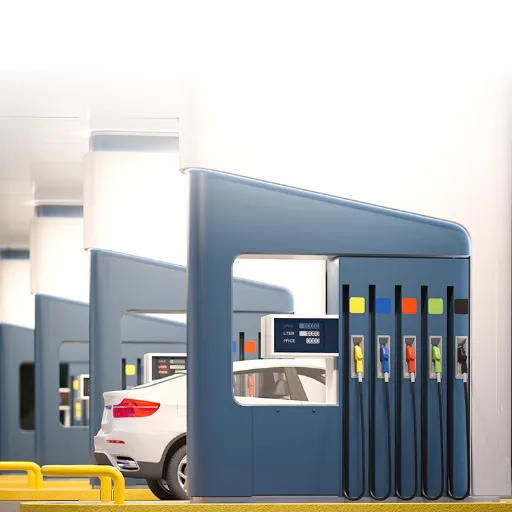
Smart gas stations automate daily functions using digital means to reduce costs. Some features provided by automation include payment systems, real-time inventory tracking, and predictive maintenance, which help smooth workflow issues and minimize downtime. Energy-efficient lighting and innovative HVAC systems are also designed to reduce costs while minimizing environmental impact. With these solutions, it is possible to achieve increased operational efficiencies and reduced costs, ultimately leading to better customer service.
Automated Fuel Dispensing Systems
Automated refueling systems have been the genesis of bringing convenience, efficiency, and precision to the fueling process through modern technology. Advancing hardware technologies, such as RFID readers and smart nozzles, are combined with software solutions to facilitate the smooth monetization of fuel. In one such instance, utilizing RFID technology can seamlessly identify a vehicle, allowing for pre-approval fuelling among registered customers or fleet operators.
Automated System Benefits
- Transaction Time Reduction: Up to 25% faster processing during peak hours
- Error Reduction: Minimized human error in fuel measurement and transaction recording
- Remote Monitoring: Real-time fuel level status and inventory control
- Enhanced Security: Reduced cash transactions and improved accountability
- Customer Rewards: Integrated loyalty programs and personalized offers
Industry statistics have recently shown a reduction in transaction time of up to 25% with these systems. That would mean, during peak hours, more customers are catered to by gas stations. Apart from the transaction time, human error in fuel measurement or incorrect inputs to machines recording transactions is reduced through the deployment of automated systems, thereby improving accountability. Some systems come with remote monitoring capabilities, allowing operators to observe fuel-level status in real-time and anticipate refilling needs, thereby augmenting inventory control. Better options, along with redeemable offers and loyalty programs, offer another significant advantage; these automated systems provide customers with a fast, contactless, and rewarding way to fuel up.
The adoption of automated fuel dispensing systems by gas stations further reduces their operational costs, security improves, and cash transactions almost cease to exist, thereby making them a worthwhile investment for both large and small gas stations.
Real-Time Data Analytics and Monitoring
Real-time data analytics and monitoring tools have become indispensable in the fuel retail industry, granting a platform for businesses to analyze insights into operations and customer behaviors immediately. Today, refineries are equipped with integrated systems that track fuel inventory levels, pump performance, and potential maintenance needs in real-time. The result is efficient operations with minimal downtime resulting from unexpected technical problems.
| Monitoring Area | Key Metrics | Benefits | Impact |
|---|---|---|---|
| Fuel Inventory | Real-time levels, consumption patterns | Prevent stockouts, optimize ordering | Improved supply chain efficiency |
| Security | Dispensing patterns, anomaly detection | Theft prevention | 30% reduction in fuel theft |
| Customer Behavior | Purchase patterns, preferences | Optimized inventory, targeted promotions | Increased customer satisfaction |
| Equipment Performance | Pump status, maintenance needs | Predictive maintenance | Reduced downtime |
| Environmental Impact | Emissions, fuel accuracy | Compliance, sustainability | Reduced environmental footprint |
The data show that such integrated monitoring systems may reduce fuel theft by 30%, as they can highlight suspicious behavior or abnormalities in fuel dispensing patterns. Furthermore, by analyzing customer purchase patterns, gas stations can stock their convenience stores effectively, ensuring that the most frequently purchased items are readily available on their shelves. Real-time analytics also allow price adjustments for fuel by the manager, based on market trends, thus maximizing profits while maintaining a competitive price.
In addition, these systems also contribute toward environmental sustainability by ensuring that only the measured quantity of fuel is dispensed, hence curtailing the emissions associated with unnecessary equipment maintenance. Together, real-time data analytics and monitoring help fuel traders in enhancing performance, customer satisfaction, and profitability while adapting to an ever-changing marketplace.
Customer Experience Enhancements
Fuel retailers are harnessing technology to amplify seamless and personalized experiences for their clients. Contactless payments are perhaps one such opportunity-their adoption has risen considerably. According to studies, over 70% of consumers prefer digital payment methods at fuel stations due to their convenience and speed. In another mode, loyalty programs tied to mobile applications offer special discounts and rewards. Often, these have tracking enabled to help customers find the nearest station with their desired services and prices.
Contactless payments, mobile wallets, and app-based transactions provide secure and convenient payment options for customers.
Mobile app-based rewards systems track customer preferences and offer personalized discounts and promotions.
Real-time notifications about promotions, price changes, and new services keep customers informed and engaged.
Automated kiosks and customer support systems reduce waiting times and improve overall satisfaction levels.
Innovative digital signage and mobile notifications keep the lines of communication open with customers about promotions, price changes, new services, and other relevant information. They also utilize self-service kiosks and automated customer support systems to reduce waiting time and increase overall satisfaction levels. Focusing on innovation and the customer, fuel retailers stay ahead of the curve in meeting shifting consumer needs while building deeper brand loyalty.
Applications of Smart Technology in Gas Stations
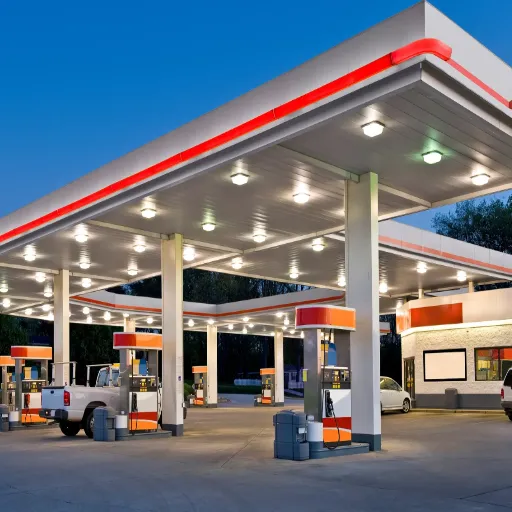
A few other service industries are being impacted in many facets of efficiency and customer experience, like gas stations, through innovative technology. Automated fuel dispensers for quick and easy refueling, as well as mobile-based payments for convenient and secure transactions, all contribute to customer on-the-go convenience. Real-time data analysis supports inventory management and fuel delivery planning, reducing costs while ensuring stock availability. Vehicle recognition can streamline the workings of loyalty programs that offer personalized rewards. These changes also help operational efficiency while improving customer satisfaction levels.
Integration of Mobile Payments
The integration of mobile payment methods into fuel stations has given a new meaning to the fueling service for customers. By offering secure platforms such as contactless payments, mobile wallets, or app payments, customers can pay swiftly and efficiently without the need for physical cash or credit cards. Mobile payments have experienced substantial growth in recent years, with some areas seeing annual growth rates of 30%. The unique convenience and state-of-the-art security features—putting encryption and tokenization on guard to secure a customer’s sensitive financial information —led to such adoption.
Mobile Payment Features
- Security: Encryption and tokenization protect sensitive financial information
- Convenience: Swift transactions without physical cash or cards
- Integration: Seamless connection with loyalty programs
- Transparency: Real-time transaction notifications and records
- Growth: 30% annual growth rate in adoption
Furthermore, with most mobile payment applications integrated into loyalty programs, whereby users can accumulate points or earn cashback offers during purchases, a further reference point becomes an added attraction. This strategy automatically increases the loyalty and retention levels of customers who have the app installed on their mobile phones. Payment notifications, aided by real-time transaction recording, provide transparency to the process and create a smooth customer experience, thereby reinforcing the role of mobile payments as a utility in new-age fuel station operations.
Smart Inventory Management
Smart inventory management systems utilize advanced technologies, including IoT sensors, real-time data analytics, and AI algorithms, to optimize stock levels and minimize waste. These systems enable fuel stations to maintain accurate inventory records, tracking fuel levels through a combination of sensor technologies, demand pattern prediction, and alerting operators when replenishment is due. For example, sensors with IoT capabilities deployed in fuel tanks can track fuel levels in real-time, facilitating timely ordering to prevent stockouts.
| Technology Component | Function | Benefits | Impact on Operations |
|---|---|---|---|
| IoT Sensors | Real-time fuel level monitoring | Prevent stockouts and overstocking | 20-30% reduction in excess stock |
| AI Algorithms | Demand forecasting | Optimal stock preparation | Improved efficiency during peak hours |
| Data Analytics | Purchase pattern analysis | Inventory optimization | Enhanced customer satisfaction |
| Mobile Integration | Personalized promotions | Targeted marketing | Increased sales and customer loyalty |
A study has shown that companies using innovative inventory solutions can reduce excess stock by as much as 20 to 30 percent, thereby slashing the costs associated with stock while still ensuring an ample supply. Additionally, AI demand forecasting enables operators to prepare for peak hours and stock accordingly, thereby improving overall operational efficiency. Fuel stations also stand to benefit from integrating innovative inventory systems with mobile payment systems to offer promotions tailored to purchase behavior, thereby boosting sales and enhancing customer experience. This reciprocal integration between inventory management and customer satisfaction will ultimately lead to increased profits and growth for businesses.
Energy Management Solutions
Energy management solutions are crucial for being agents of change in modernizing fuel station operations and conserving energy. The deployment of energy efficiency measures, such as LED lighting and smart HVAC controls, should drastically decrease electricity costs. Upgrading to LED lighting in a single fuel station can reduce energy consumption by 70% compared to a conventional lighting system. On the other hand, there are possibilities for integrating renewable energy systems, such as solar panels, which could generate clean energy onsite, leading to long-term savings and a reduced carbon footprint for the station. Solar installation data reveal that such systems can reduce dependence on grid electricity, providing commercial establishments with energy cost savings of up to 20-30% annually.
70%
20-30%
75%
25x
Energy monitoring systems are another vital aspect, enabling real-time analysis of energy consumption so that operations can be optimized. Operators can monitor information such as peak consumption times and energy usage for equipment, allowing adjustments to be made that prevent unnecessary energy waste. On a larger scale, gaining resilience could be enhanced through energy storage, allowing excess energy produced during off-peak hours to be retained for later use. An energy management agenda for the present is sustainable and aligns with corporate social responsibility principles, thereby helping operators yield at least some portion of industry regulation and profitability in return.
Architectural Innovations in Smart Gas Stations
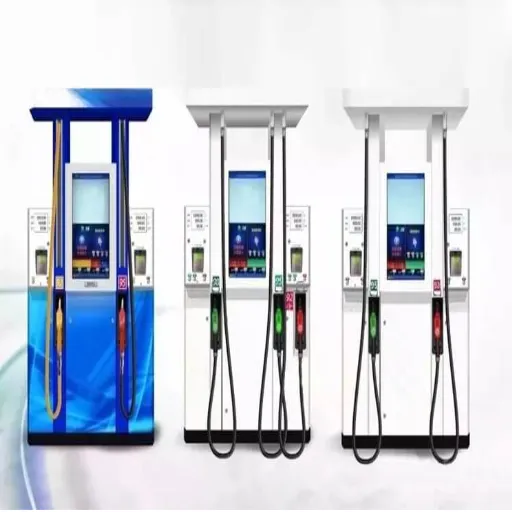
In architectural work for smart gas stations, the primary considerations are efficiency, sustainability, and optimizing the customer experience. On that front, the design maximizes the use of renewable energy-generating resources, such as solar panels, to reduce its own carbon emissions and operational costs. The effective utilization of space helps minimize vehicle congestion, thereby facilitating quicker and smoother refueling for customers. Green infrastructure also plays a role by employing rainwater harvesting and energy-efficient building materials, thereby ensuring sustainability. On the other hand, employing digitally animated display systems and cashless payment kiosks ensures further customer convenience, thereby reducing the need for manual interactions. These developments thus contribute to an advanced, environmentally friendly, and customer-focused ambiance for refueling.
Designing for Sustainability
A modern-day eco-conscious fueling station utilizes cutting-edge technologies to minimize its ecological footprint and maintain operational efficiency. Solar panels have become the key advancement in the provision of renewable energy to power stations. In its simplest form, solar production has experienced exponential growth and seen a significant price decrease over the last decade, making it an accessible option for many fuel stations, according to the International Renewable Energy Agency (IRENA).
Sustainability Features in Modern Gas Stations
- Solar Panel Integration: Renewable energy generation with decreased costs over the last decade
- LED Lighting Systems: 75% less power consumption with 25x longer operational life
- Smart Energy Sensors: Real-time monitoring to optimize energy consumption
- Rainwater Harvesting: 10-50% reduction in water consumption, depending on system design
- EV Charging Infrastructure: Supporting the transition to electric vehicles
Another insert is the energy-efficient LED lighting system. These consume up to 75% less power than conventional lights, with operational longevity 25 times longer, thereby limiting maintenance and operational costs over time. Additionally, fuel stations are increasingly employing smart sensors to detect and monitor energy consumption in real-time, ensuring that only the necessary amount of energy is used during operations.
Water conservation is another essential aspect of ecological design. The rainwater harvesting system can be installed to collect and store water for non-potable uses, like cleaning and landscaping, which significantly reduces dependence on the local water system. According to studies, the efficiency of rainwater harvesting systems can help reduce water consumption by 10 to 50%, depending on the system’s size and design.
Last but not least, the establishment of EV charging outlets signals a growing transition toward renewable energy-powered transportation solutions. The data indicates acceleration in global EV adoption, with 30% of vehicle sales projected to be electric by 2030. Fast EV stations thus become environmentally friendly and attract an enlightened clientele. As such, sustainable fuel stations can set up new records in environmental protection and operation by integrating these technologies with global sustainability endeavors.
Space Optimization Techniques
Effective space optimization has gained significant attention in the design of modern sustainable fueling stations, ensuring efficiency, cost-effectiveness, and an enhanced customer experience. One approach is to arrange fuel areas in a way that optimizes vehicle throughput. For example, multi-lane designs and drive-through configurations can help reduce wait times and improve traffic flow. Recent studies even state that queuing layout optimization can result in a 25% increase in capacity for a fueling station.
Space Optimization Strategies
- Multi-lane Designs: Drive-through configurations reduce wait times and improve traffic flow
- Modular Charging Units: Smaller footprint allows more vehicles in tighter spaces
- Vertical Enhancements: Multi-level parking with integrated EV chargers
- Rooftop Solar Panels: Utilize vertical space for renewable energy generation
- Intelligent Systems: 20-30% improvement in operational efficiency
Smaller-sized modular charging units may also be used for efficient land use. These units tend to have a smaller footprint than regular gas pump islands, allowing more cars to be accommodated at a station in a tighter space. Vertical enhancements to space utilization include methods such as a multi-level parking system with integrated EV chargers or rooftop solar panels. These methods not only increase space efficiency but also add value through the generation of renewable energy.
Moreover, innovative technologies such as automated payment, sensor-based parking guidance, and predictive maintenance can be adopted for this purpose to streamline operations and, in turn, reduce the need for excessive physical infrastructure. The research findings indicate that operational efficiency can be improved by 20-30% with intelligent systems, which limit downtime and dynamically address space constraints. With these novel methods, sustainable fueling stations are placed as front-runners in functional design and green engineering.
Future Trends in Gas Station Architecture
In light of the shift towards sustainability, customer experience, and seamless technology integration, gas station architecture continues to evolve. Some significant trends include the use of solar panel installations and EV charge hubs as amenities for environmentally conscious customers. Energy-efficient construction and materials for green buildings are on priority lists to lower carbon footprints. The growth of stations into multi-purpose service hubs is another notable feature, where they offer convenience stores, food joints, and co-working spaces to attract clientele from all walks of life.
Integration of convenience stores, food courts, and co-working spaces to serve diverse customer needs beyond fuel.
Flexible designs that can quickly adapt to alternative fuels like hydrogen or biofuels as market demands change.
Sustainable construction materials and energy-efficient designs to minimize environmental impact.
Smart systems that use artificial intelligence to optimize vehicle traffic patterns and reduce congestion.
On the downside, technology is shaping the way the stations are functioning. Automated fueling, digital payments, and AI-based systems will optimize traffic flow, becoming the norm. The design layout must ingeniously incorporate a modular structure for flexibility; thus, stations will be able to quickly convert land-based infrastructure for hydrogen or biofuels as necessary. All these will demonstrate a significant commitment to meeting sustainability goals at a global level, as well as providing enhancements in consumer convenience and operational efficiency.
Real-World Scenarios of Smart Gas Stations
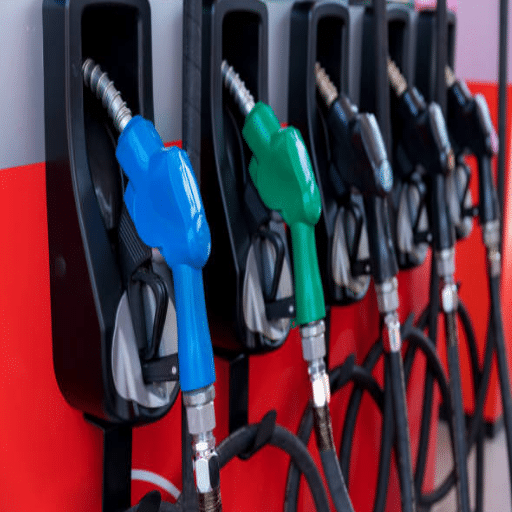
One of the latest innovations considered globally is the use of contactless payment systems, such as mobile apps or card-based solutions, to expedite payments, thereby enhancing convenience for customers.
Smaller cities like Oslo and Amsterdam offer electric vehicle charging facilities, keeping their users and the larger community in mind, along with the usual fuel services at these smart fuel stations.
Concerned about the environment, many stations are installing LEDs and solar cells to minimize their environmental impact, as seen in some installations in the United States and certain parts of Europe.
Another interesting factor in Asia is that stations utilize AI to predict times of peak usage, thereby effectively managing resources and reducing customer waiting times.
Case Studies of Successful Implementations
To offer a diverse range of fast charging options across Europe, Shell may integrate renewable energy sources, such as solar energy, where feasible. In some locations, by utilizing energy-efficient lights and AI-enabled information systems that provide real-time data on charge availability to consumers, Shell has been able to reduce energy costs.
A prime example of successful EV infrastructure development is the Tesla Supercharger network. The chargers are highly convenient to location and can deliver a high-speed charge in mere minutes. Paired with an app that is intuitive and gives real-time updates regarding charge status and directions to nearby chargers, providing customers with a seamless journey.
BP Pulse gained fame as an innovator in EV chargers, taking one step towards accessibility and the other towards sustainability. Its stations utilize energy-efficient designs and provide comprehensive customer support, including the integration of mobile applications for payments and booking chargers. Analytics-driven insights were then implemented into operations to optimize the station and enrich the end-user experience.
Challenges Faced by Early Adopters
An early adopter of technology for electric vehicles (EVs) in the field, I faced several issues that tested my commitment to sustainable transportation. The most significant issue was the limited availability of charging infrastructure, which necessitated planning trips to ensure electronics would not run out of power. There were also compatibility issues with some chargers that essentially prevented me from finding ones that worked most suitably with my vehicle. Another issue was the initial EV cost, including the car and the installation of a home charger, which I thought was worth it in the long run. However, my experiences suggested that the development and expansion of the industry would be very important in the future.
Common Challenges for Early Adopters
- Infrastructure Limitations: Limited charging station availability requiring careful trip planning
- Compatibility Issues: Inconsistent charging standards across different networks
- High Initial Costs: Significant upfront investment for vehicles and home charging equipment
- Range Anxiety: Concerns about battery life and charging availability on longer trips
- Technology Learning Curve: Adapting to new payment systems and charging procedures
Future Outlook and Predictions
The entire EV industry is in the midst of a whirlwind storm of rapid pace and expansive growth. It seems that battery technology must achieve greater range and faster charging times to address the concerns of present and aspiring EV owners. Various governments also impose stricter regulations on emissions and simultaneously amend incentives to enhance consumer adoption and investment in EV technology.
| Trend Area | Current Status | Future Projection | Expected Timeline |
|---|---|---|---|
| EV Market Share | Rapidly growing adoption | 30% of vehicle sales by 2030 | 2030 |
| Battery Technology | Improving range and charging speed | Faster charging, longer life | Next 5-10 years |
| Charging Infrastructure | Expanding globally | Comprehensive urban and rural coverage | 2025-2030 |
| Cost Reduction | Decreasing battery costs | More affordable EV models | Ongoing |
| Government Policies | Incentives and regulations | Stricter emissions standards | Continuous |
Expansion of EV infrastructure components is another core concept that involves partnering companies and governments to install more charging stations in cities, rural areas, and along major highways. This infrastructural growth also aims to provide secure and seamless access to charging for EV owners, thereby alleviating concerns about range. Additionally, the integration with renewable energy is under development, aiming to further enhance sustainability for EVs and thereby reduce their environmental footprint.
Other forecasts for the EV industry foresee affordable models in the spotlight, offering these electric vehicles to a much larger clientele. The market, therefore, should expand considerably as the public shifts in perspective and moves toward sustainability, creating a cleaner and greener future.
The Future of Smart Gas Stations
Smart gas stations represent a fundamental shift in how we approach fuel retail, combining advanced technology, environmental sustainability, and enhanced customer experience. As we move toward a more connected and environmentally conscious future, these innovative stations will play a crucial role in supporting both traditional vehicles and the growing electric vehicle market. The integration of IoT devices, AI analytics, renewable energy systems, and mobile technologies creates a comprehensive ecosystem that benefits operators, customers, and the environment alike.
The journey toward widespread adoption of smart gas station technology presents both opportunities and challenges, but the clear benefits in efficiency, sustainability, and customer satisfaction make this transformation inevitable. As battery technology improves, charging infrastructure expands, and costs continue to decrease, we can expect to see smart gas stations become the standard rather than the exception, paving the way for a cleaner, more efficient, and more connected future in transportation and energy.
Reference Sources
“The Effect of Facilities and Service Quality on Customer Satisfaction of Gas Station”
“Analysis of a Gas Station Hybridization with a Solar Thermal Plant by Using ETAP”
“Smart Devices and Services for Smart City”
Frequently Asked Questions (FAQs)
What is Smart Gas Station Solution?
A smart gas station solution integrates advanced technical capabilities to enhance the customer experience and improve operational efficiency in fuel stations. Such features would include cloud computing, facial recognition technology, or advanced fuel pumps that expedite the refueling process and enhance customer satisfaction.
How Can Edge Computing Help in Strengthening Gas Station Infrastructure?
Edge computing enhances gas station infrastructure by processing data close to the source, thereby reducing latency and increasing the response time of applications that perform their required functions in real-time, such as monitoring fuel levels, analyzing customer behavior, and providing innovative services that require minimal latency for data processing.
What are the benefits of using Intelligent Technologies in the Gas Industry?
These intelligent technologies offer numerous benefits, including ensuring safety by detecting potentially hazardous behaviors, enhancing operational efficiency, and promoting customer engagement through personalized services. Additionally, they also support the integration of energy management systems to optimize fuel consumption.
How can Cloud Computing Support Smart Gas Stations?
Cloud computing enables smart gas stations to utilize scalable solutions for data storage and management. Using cloud computing, smart gas stations analyze data from various disparate sources, including fuel pumps and customer interactions, deriving value from the insights gained to inform decision-making and optimize station operations.
What User Experience applications do Smart Gas Stations provide?
Smart gas stations offer several applications that enhance the user experience, including mobile payment, targeted special ads based on client preferences, and robotic automated customer service. These applications simplify the refueling process and offer greater convenience to users.
What is the role of Huawei’s Flagship Technologies in Smart Gas Stations?
Huawei flagship technologies are essential in innovative gas station development, providing technical support on networking issues, including the FusionCube converged platform. This solution provides seamless connectivity and supports numerous intelligent services that modernize traditional gas stations into service-oriented hubs.
How do Smart Services improve Fuel Pump Efficiency?
As innovative services maximize fuel pump efficiency through real-time monitoring and the use of data analytics to optimize pump operations and maintenance schedules, these services also minimize downtime, allowing customers to enjoy smooth refueling experiences with minimal customer wait time.
Can Smart Gas Stations Benefit from Integrating Robotics for Enhanced Operations?
Yes, smart gas stations can integrate robotics to automate various operations, including inventory management and customer engagement. Robotics enables gas stations to increase efficiency, reduce labor costs, and deliver a superior customer experience, ultimately fostering customer loyalty and driving revenue growth.


